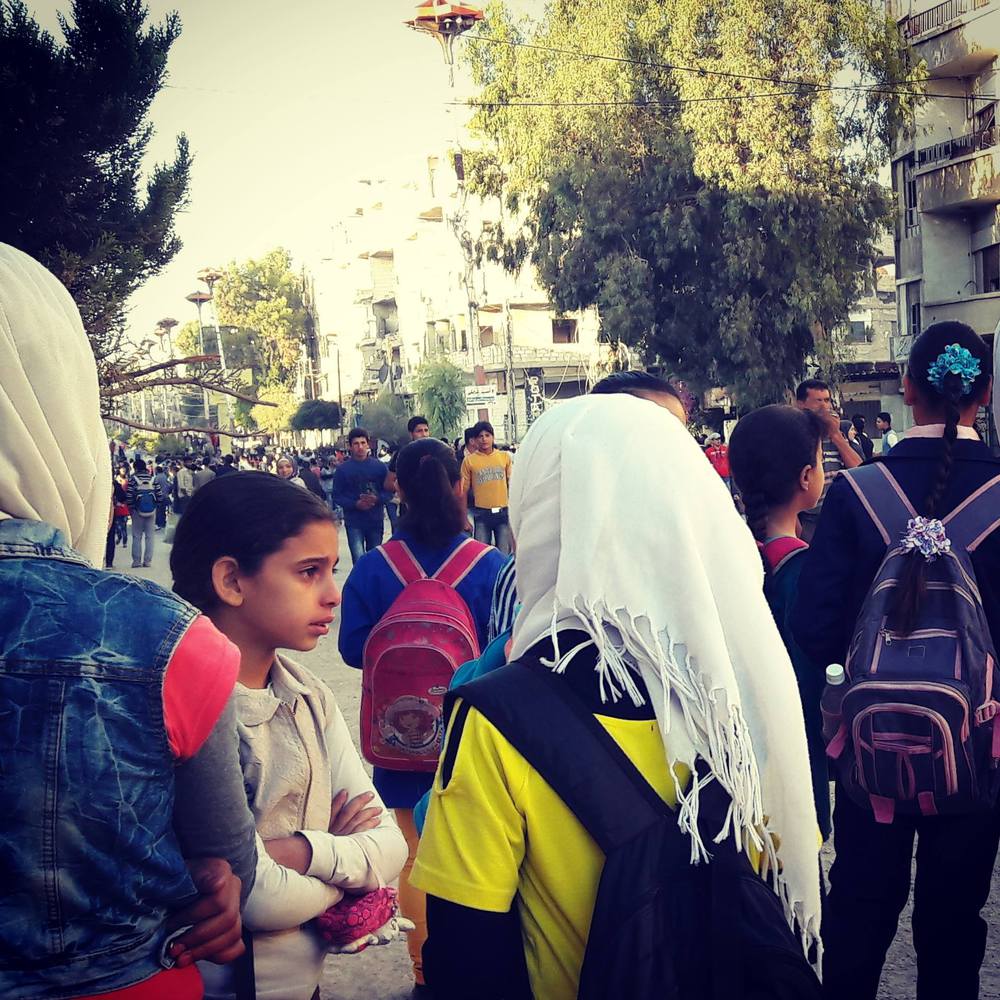Syrian government forces, backed by Russian air support, are moving into Eastern Aleppo. This is the main opposition-controlled urban centre in Syria. As Eastern Aleppo collapses, Bashar al-Assad’s regime appears poised to win the military campaign in Syria. But the war is far from over.
At this moment, more than 1.3 million Syrians are still under siege. That is three hundred thousand more than three months ago, according to the latest Siege Watch update. Siege Watch is produced jointly by PAX and The Syria Institute.
Surrender or die
People living under siege are suffering now more than ever. Eastern Aleppo is only the tip of the iceberg. Large-scale humanitarian catastrophes are also looming in Madaya, Douma and al-Waer. The Syrian government has been ratcheting up its attacks on communities under control of the opposition. The regime´s tactic had been “surrender or starve”. Now the tactic is “surrender or die,” as government and allied forces alternate between intense attacks and periods of negotiation, forcing opposition groups to sign surrender agreements leading to forcible transfers from besieged areas.
“The world has failed Syria. It’s unbearable to see how Aleppo is being annihilated live on social media,” says Alexandra Hiniker, PAX representative to the UN. “Even though the UN Security Council is deadlocked, all countries have a responsibility to stop this.”
Ruthless attacks on civilians
The intensive bombing of civilians in Eastern Aleppo has been attracting the world’s attention, but Bashar al-Assad’s forces, with Russian and Iranian help, are using the same tactics elsewhere in the country. They ruthlessly attack civilian targets, they no longer allow delivery of even basic emergency humanitarian aid and they use cease-fires as psychological intimidation, intensifying the military campaign after a short pause.
Government forces bomb civilian areas, sometimes using weapons banned internationally because they kill indiscriminately, including landmines, cluster munitions, and chemical weapons. People in many besieged areas can no longer get any medical help whatsoever, since no supplies are allowed in, and hospitals have been targeted for destruction. Other civilian buildings such as schools and search and rescue centres are also being bombed.
Humanitarian crisis
People under siege are facing food shortages, in some cases due to the destruction of nearby agricultural land. Fuel is also scarce. Winter will worsen the suffering caused by food and fuel shortages. Syrians living in four communities are in dire need of assistance.
The Syrian government aims to remove people in these and other besieged communities by force, as they have already done in Daraya and Homs. Russian soldiers and Iranian-backed militias have started overseeing local negotiations between Syrian government representatives and opposition fighters. The government has broken long-standing truces with opposition controlled communities around Damascus.
Civil Society Declaration
Meanwhile, more than 220 civil society organizations from 45 countries have issued a declaration saying that the UN Security Council has “failed to uphold its responsibility to protect the Syrian people”. Under the UN Charter, the UN General Assembly also has responsibilities in that regard. A procedure adopted in 1950 allows the General Assembly to recommend collective action when the UN Security Council fails to uphold its responsibility because of lack of unanimity of the permanent members. Signatories to the declaration also demand that UN Member States take urgent and meaningful action to stop the atrocities and protect civilians.).
Siege Watch – Fourth Quarterly Report on Besieged Areas in Syria – August-October 2016
Read the declaration from more than 220 civil society organizations.
See also: siegewatch.org




